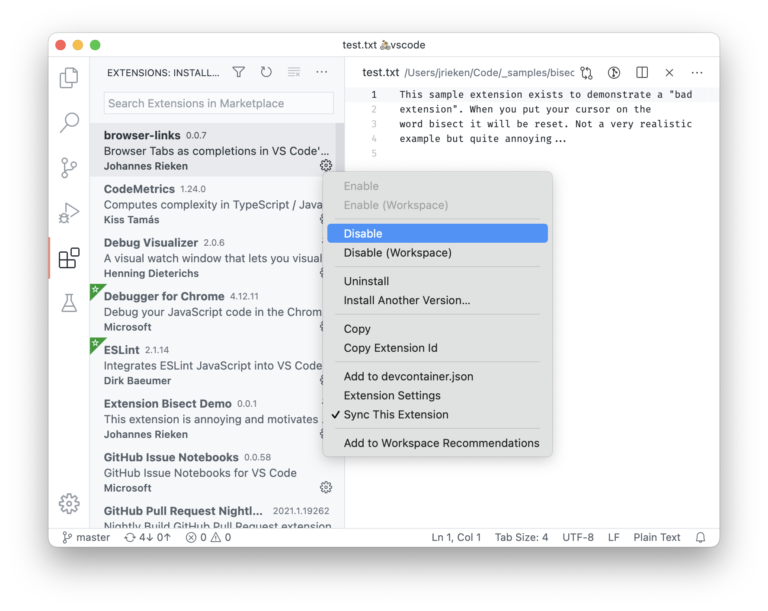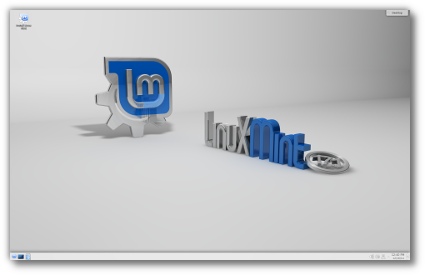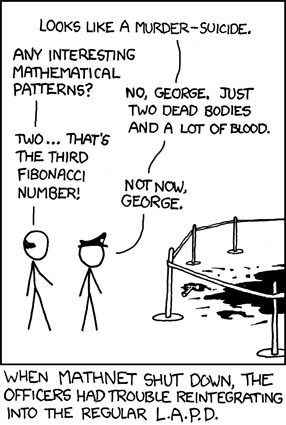Review:
On “The Linux Mint Experience”, Chema Martin wrote a long and interesting review of our latest release, Linux Mint 9 Isadora. His review raises very interesting points and gives us the opportunity to discuss some of the aspects related to this release.
Link to the review: http://cristalinux.blogspot.com/2010/05/review-linux-mint-9-isadora.html
Happy reading everyone!
Comments:
“Before you start reading the review, though, make sure you are ready for a healthy overdose of GREEN!”
Well… what can I say? We’re green indeed, the same way Fedora is blue and Ubuntu is brow… hum… pink 
“The installation wizard in Linux Mint 9 is almost identical to Ubuntu’s. There are some branding adjustments and some application information has been updated where necessary, but no significant changes.”
Most of the changes made to the installer relate to branding. There is one important difference though: Ubuntu sets the root account with a random generated password, Linux Mint gives both the user and root accounts the password chosen during the installation.
“As expected, the splash screen was not displayed correctly in Linux Mint 9, just like it wasn’t in Ubuntu 10.04.”
Plymouth isn’t a mature technology and it fails to render in high resolution in many cases, whether it’s on computers with ATI, nVidia or even Intel graphic cards. Yet, it’s a very important piece of the boot process. In the end, we made the decision to show different artwork depending on the detected resolution. In low-resolution only dots appear. In high-resolution the boot process also shows a Linux Mint logo. We also published a tutorial to help people tackle this issue.
“Other than that cosmetic little issue, the boot process was very fast, certainly benefiting from some fine tuning which was put in place for Ubuntu 10.04.”
Since the upstream adoption of upstart, Ubuntu has been focused on improving the speed of the boot process. Their latest improvements are quite significant.
“Aside from the default wallpaper, we can see that there is a single panel located at the bottom. The default icons on the desktop include Home and Computer. As you can probably tell, there is a subtle overall MS Windows flavor, which should help new users feel right at home from the start.”
I don’t think Windows deserves to be mentioned when it comes to a “traditional” desktop layout. Whether it’s the early use of the mouse device, the single panel at the bottom or the items on the desktop, none of these were invented by Microsoft. Popular Linux desktop environments have been using a bottom panel for years, FVWM, KDE, and even early versions of Gnome. Recently, the Gnome project and most of the distribution using that desktop switched their panel to the top (From a usability point of view, the rationale is that it’s easier to move the mouse pointer down when browsing lists than moving it up… though Linux Mint went away from list-menus and adopted filtering instead.). The layout used by Linux Mint certainly looks more similar to Windows than Mac OS or even Ubuntu, but it’s a traditional layout. It fits our idea of a comfortable desktop and if it helps for an easy migration from Windows to Linux, then great, but that isn’t the reason why our desktop looks like this. Linux Mint is designed with Linux Mint users in mind, it certainly doesn’t try to be similar to Windows. I’m sorry if I sound rude when I say that, but most of us switched to Linux in the early 90’s and since 2006 we’ve worked really hard on improving something that we feel is now a very good, if not the best, desktop operating system. Microsoft Windows certainly is better to some people, considering the market share, but not to us, and it’s certainly not something we’re trying to copy.
“The main character role clearly goes to the Linux Mint menu, though, which is quite a radical departure from the GNOME default one. I personally didn’t like it in previous releases, finding it a bit cumbersome and slow, but I must say I loved it this time around.”
The Linux Mint menu is huge. In fact, on a netbook it can take more than half of the screen… we’re aware of this and we’re trying to come up with a better layout. Most people are intimidated by it when they first use it. and since the menus they’re used to don’t provide the same level of functionality they don’t always understand why it uses so much space. It really deserves some attention though, whether it’s the filtering or even the fact that you can add and remove software directly from it, it’s an extremely advanced menu and one of the technologies we’re the most proud of on the Mint desktop.
“In fact, one interesting addition in this release is the improvement of the main menu configuration, which includes more options and the ability to tweak the menu opacity. In my opinion, this new feature would have been a nice addition if it was only the background of the menu that got transparent, keeping icons and letters visible. At its current state the whole menu becomes transparent, which makes this feature impractical in my opinion.”
Very good point. I’ll look into that and see if we can fix it in the near future.
“Instead of pushing for tons of window theme changes or changing the window buttons location, they have kept their signature Shiki theme as default and have concentrated on providing a great and very professional set of wallpapers. I believe this piece was outsourced to a third party and the quality is there.”
Although most people customize their desktop, the default artwork is very important to us. We changed the overall look and feel with the release of Linux Mint 6, going from a black background and light widgets to a green background with black widgets. Isadora is the 3rd release using this look and feel. In the future we’d like to experiment with a metallic look & feel, but until it’s completely ready we’ll stick to this. The community often produces quality backgrounds but this time around I didn’t feel we had enough and I was interested in getting more choice. We also gathered from the previous reviews and the user feedback that people wanted unbranded backgrounds. So we outsourced the production of desktop backgrounds and since it was successful we’ll probably continue to do this for future releases.
“There is one element that I found lacking in Ubuntu 10.04 and it’s also a miss in Linux Mint 9 as well: The default icon set leaves much to be desired. When you browse those gorgeous wallpapers, set up fonts to your liking and open the good looking main menu, you can’t help but notice how bad those icons actually look! I did find a solution which seems perfectly fitting: Get the Oxigen Green refit icon theme, which feels custom made and looks awesome.”
I’m not sure I agree.. but of course this is really subjective. I’d be interested to know what people think about the icons and the theme mentioned in the review.
“I very much like how Linux Mint 9 looks overall. The screenshots included are using only default wallpapers and window themes, even Droid fonts come pre-installed.”
I’m a big fan of Android phones, but the main reason the Droid fonts are installed by default is because they allow the system to show content in a large variety of languages, including Arabic, Chinese, Korean, Japanese..etc without requiring too much space within the CD. They’re also a great addition for Netbook users who want to customize Linux Mint on lower resolution screens.
“Luckily, the Linux Mint developers kept a cool head and decided to pass on most of the new application choices introduced by Canonical on Ubuntu 10.04. Gwibber makes it into the application catalog, but Empathy is out in favor of Pidgin.”
The only reason to include Empathy would be to gain the ability to chat on the local network. This is something that usually only interests companies and it’s also something we’re planning to implement ourselves in future releases. Giver is using Mono and it’s not actively developed, so we’re planning to write an alternative in Python and to add local network chat to it. As for the other features, according to our tests, Pidgin is simply a much better application than Empathy at the moment.
“Thunderbird continues to replace Evolution, as has been the case in previous Linux Mint releases. Unfortunately, because Linux Mint 9 is derived from Ubuntu 10.04, it also suffers from Thunderbird lacking Lightning calendar functionality.”
Thunderbird is among the most popular open-source applications in the World. It lacks compatibility with Exchange but it represents a better personal alternative than Evolution in my opinion. Linux Mint traditionally comes with the lightning extension installed by default, but since Thunderbird 3 was released the Lightning project hasn’t released a stable version yet. As far as I know it’s in BETA now and you can download it from here.
“The GIMP is in, which should be good news for those who, like me, enjoy having it as part of the default installation. PiTiVi is nowhere to be found.”
There was never any question about removing Gimp or adding PiTiVi.
“Unlike Ubuntu, Linux Mint includes the full OpenOffice suite (v3.2.0), which is good for those who do use Base and Draw.”
Just a quick note about OpenOffice.org-Base: It’s only installed by default on the DVD version of Linux Mint 9. If you use the CD version, it gets installed during the installation if and only if you’re connected to the Internet.
“Another application I found interesting is the graphical Hardware Analysis tool. This application apparently provides a graphical interface to the lshw command, obviously making it very easy for unexperienced users to get to that information. In fact, I think this tool can be very helpful for troubleshooting hardware problems. It even includes a “Copy to Clipboard” function, which should prove useful when trying to get help from forums or IRC channels.”
This is great tool, though it’s probably better to use “inxi” (also installed by default) to paste your specs on the forums and the IRC.
“The user administration tool also got a nice new face, which I find simple and clean. Once again, I think this is just another feature which helps positioning Linux Mint 9 as one of the easiest distros out there.”
Credits go to the Gnome project for this.
“One other area in which Linux Mint departured from Ubuntu’s ways is the management of software. Linux Mint has been using a Software Center application for years, which I think is what inspired Ubuntu to do the same.”
It’s hard to say. Canonical never communicated with us and if they did get the inspiration from us, then why didn’t they go the whole way and provide an on-line catalog as well? They’re not using our code either and in many ways they reinvented the wheel. This is still an aspect of the desktop we do better and we won’t switch to what they’re doing upstream until it provides the same level of functionality. What we did though is take a deep look at their new Software Center and we reused everything we liked about it in the new Software Manager.
“When I first tested the Software Center and the Update Manager back in Linux Mint 7, I used to think they were awfully slow. I liked the overall concept, but its performance was terrible when compared to Ubuntu’s Software management tools. I am not sure if that was related to the Linux Mint repositories lacking resources or bandwith back then, or if it was related to a design problem, but the good news is that both applications performed very well this time around. It seems that whatever the problem was, it is fixed now.”
The Update Manager has been improved with every release. The new Software Manager is a complete re-write. There’s an on-going problem with its performance though. The more reviews are contributed the longer it takes for the Software Manager to start up. We managed to significantly improve its performance between the RC and the stable release of Linux Mint 9 but we’re still working on this. The application shouldn’t only be faster to launch, it should provide a visual indication of the progress being made during the launch… either in a way similar to the Update Manager, or in a way similar to OpenOffice.org (using a splash screen).
“I was glad to see that the Chromium browser made it into the Mint repositories. The search was simple, quickly returning all related packages. I must say this is something Synaptic or the Ubuntu Software Center don’t do all that well. You often find yourself getting results which have little or nothing to do with what you were searching for, so it was a nice treat to see my search results were spot on in Mint 9. Drilling down on one of the package entries shows more information, as well as user scores, which I find particularly useful.”
The search feature in the Software Manager only shows matching package names. This makes it fast and accurate. If you’re searching for a particular keyword you can extend the search to packages descriptions and summaries using the Edit->Preference menu. This will result in a slower search but it will find more results.
“I personally had my share of issues with Linux Mint in the past. I felt that many of its customizations were actually intrusive. I was so used to configuring Ubuntu to my own taste that Mint’s own customizations felt a bit alien. This time around, though, Ubuntu 10.04 has taken such radical twist that Linux Mint 9 feels like the more familiar now. No MeMenu, no window buttons on the left, no push towards social interaction… In short, I have found myself very comfortable using Linux Mint 9. It obviously does include applications such as Gwibber, Pidgin and Thunderbird, it’s just that it does not feel like you are supposed to use them.”
Web2 is great, it looks shiny, everything’s on the cloud, accessible from anywhere, any computer or laptop, we can share things with friends and even more than before everything is completely free. It’s perfect really, and it’s extremely handy. One of the reasons it’s so useful is because the content is generated by us and all the people using it. The problem with this is that websites aren’t more popular depending on how good they are… but on how many people they managed to attract. No matter how good a website can be, if it doesn’t have a lot of users, it won’t have a lot of content, and consequently it won’t be of much interest to us. The tragic consequence of this is that we stopped to be picky… it’s not a simple matter of preferring Gnome or KDE, it’s more like moving to Jabber and losing all your MSN friends. Web2 is great “if” you’re connected to the same major websites everyone else is using. Say some great alternative comes up, it will only start to be a great alternative when everyone else migrates to it. Of course that’s how the world works… and that’s also why most people still run Microsoft Windows. As a Linux user, even as one that actively use Google Apps, and a few Web2 services, I feel uncomfortable if these “brands”, are chosen for me. A lot of people use Facebook, and so it’s convenient for them to have it installed or linked to… yet, how annoying is that to people who don’t use Facebook? I’m not even sure some Facebook users wouldn’t be annoyed by it. That fascination for brands, which is closely associated to Web2 services, doesn’t go well with the ethos of comfort and elegance we chose to follow. There was a lot of hesitation before including Gwibber, and in the end, it was because it interacted not only with one particular service but with many of them, that it was included.
“I have also noticed a very strong effort towards making the default Look&Feel convey a good and professional quality to it. A successful effort, I have to say.”
That’s great, I’m glad about this. Some people were upset to see us spend too much time on the artwork but the attention to detail is very important and after 6 month of hard work it’s nice to complement the new features with a look & feel that makes the release look both fresh and professional.





